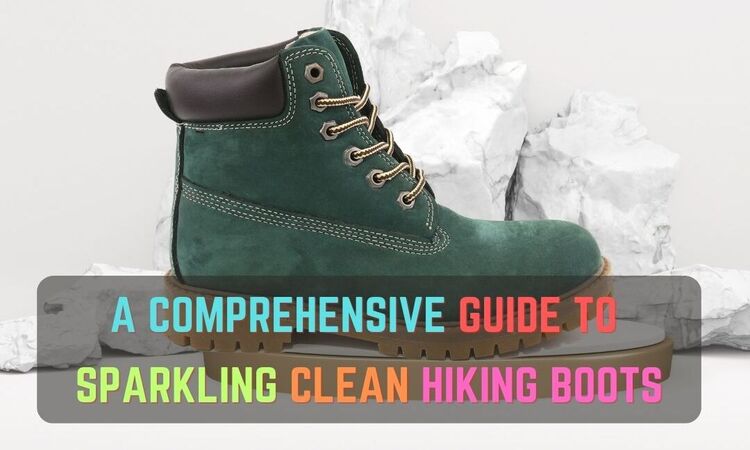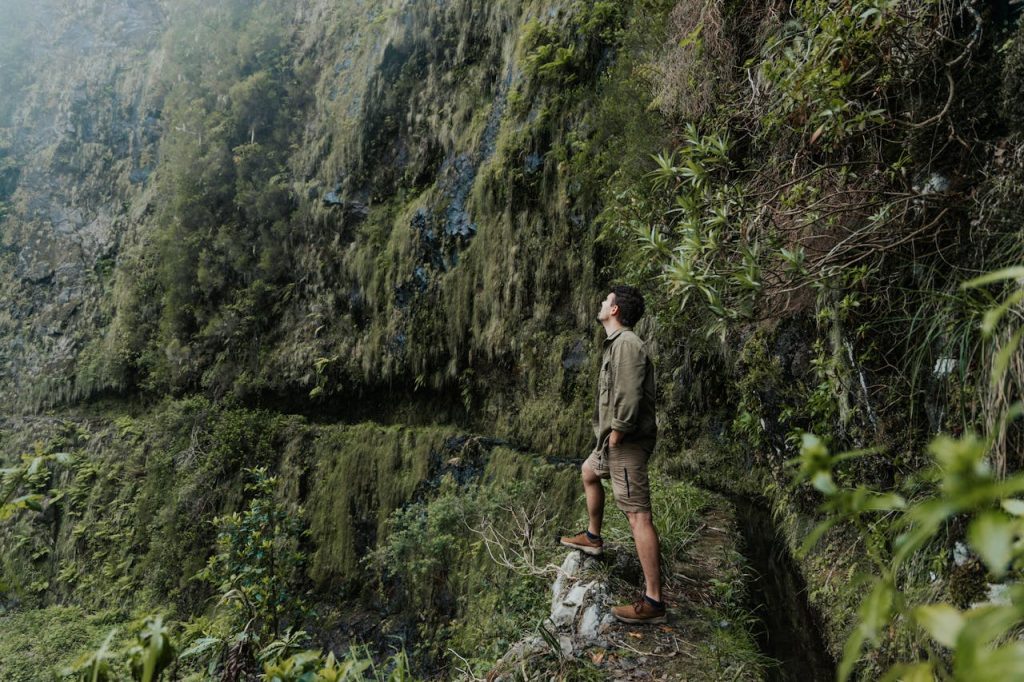As outdoor enthusiasts, we understand the significance of having the proper equipment for our outdoor escapades. A reliable and sturdy pair of hiking boots is one of the most important items for any hiking trip, ensuring a comfortable and safe journey through the wild. However, more than investing in high-quality boots is required; you must also take care of them to ensure their longevity and performance. This article will guide you on adequately cleaning hiking boots.
Materials Needed for Cleaning Hiking Boots
Table of Contents
ToggleGathering all the required materials beforehand is paramount to embarking on the cleaning journey. You’ll need a water-resistant brush, mild soap or specialized boot cleaner, soft cloth or sponge, and water.
It’s also essential to note that not all materials and cleaning solutions are suitable for all types of hiking boots. Refer to the manufacturer’s instructions and recommendations before using any product on your shoes.
Pre-Cleaning Hiking Boots: Essential Steps You Should Take
You know the importance of maintaining your hiking gear as an avid hiker. Your hiking boots, in particular, need extra attention as they protect your feet from various terrains and weather conditions. Regular cleaning can help prolong their lifespan and enhance their performance. However, you should take a few essential steps before cleaning your hiking boots. This article will guide you through the pre-cleaning steps to help you get the most out of your hiking boots.
Remove Excess Dirt and Debris
The first step in pre-cleaning your hiking boots is to remove any excess dirt and debris from their surface. This can be done using a soft-bristled brush or a damp cloth. Pay attention to the crevices and difficult-to-reach areas where dirt can accumulate. This action will make it easier for you to clean your boots thoroughly and prevent any damage to the material.
Check the Laces and Eyelets
The next step is to check the laces and eyelets of your hiking boots. Ensure they are not frayed or damaged, as this can affect the fit of your boots. If you notice any damage, replace them before cleaning your boots.
Inspect the Soles
The soles of your hiking boots are the most important part, as they provide traction and support. Scrutinize the soles to check for any damage or wear and tear. If you notice any cracks or holes, it’s time to replace your boots. If the soles are in good condition, you can proceed with cleaning.
Determine the Type of Material
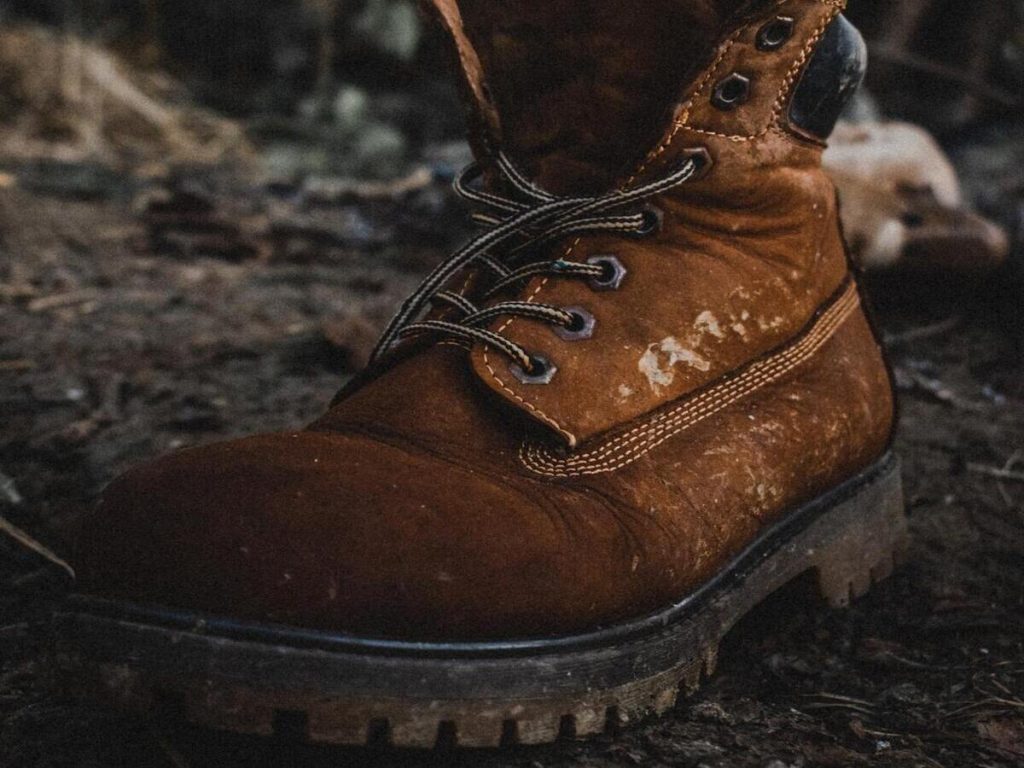
Before you start cleaning your hiking boots, it’s essential to determine the type of material they are made of. Different materials need to be treated differently. For example, you should treat leather boots differently than synthetic boots. Refer to the manufacturer’s instructions or research to determine the appropriate cleaning method for your hiking boots.
Choose the Right Cleaning Products
Once you have determined the type of material, you can choose the appropriate cleaning products. Various cleaning products are available for hiking boots, including sprays, wipes, and gels. Choose a product that is compatible with the material of your boots and has good reviews from other hikers.
Test the Cleaning Product
Before applying the cleaning product to your boots, it’s important to test it on a small, inconspicuous area to ensure it doesn’t damage the material. Follow the manufacturer’s instructions carefully and wait for the recommended time before wiping it off.
Following these essential steps, you can pre-clean your hiking boots and prepare them for a more thorough cleaning.
Cleaning Hiking Boots
Now that your boots are prepped, it’s time to start cleaning them. Follow these steps to clean your hiking boots effectively:
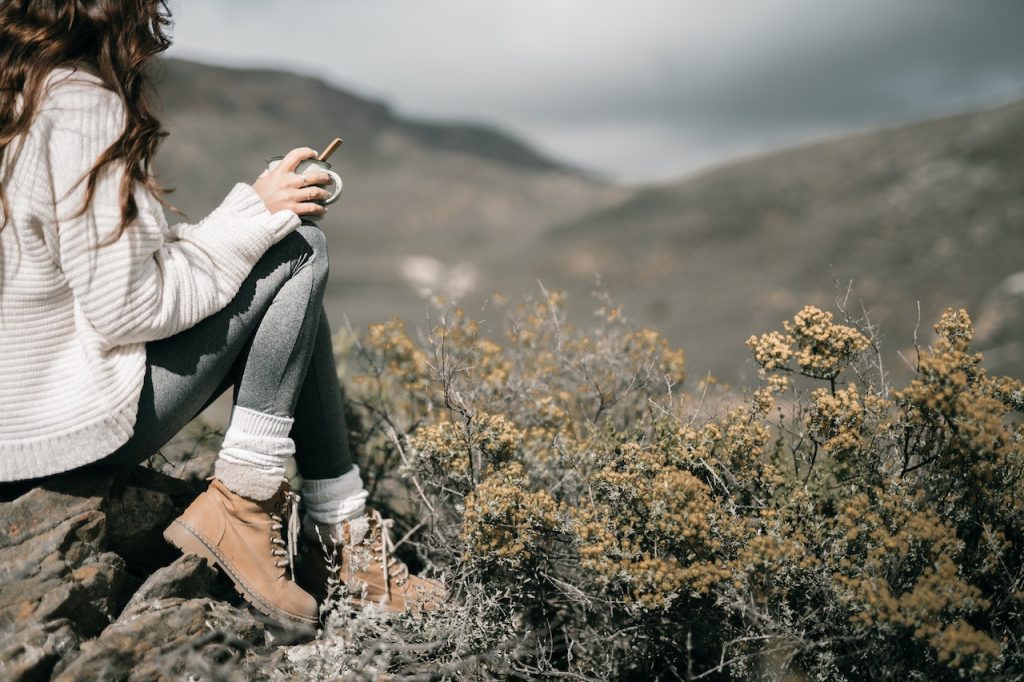
Step 1: Apply the Cleaning Product:

Apply the cleaning product you have chosen to use to your boots, following the instructions provided by the manufacturer. Apply the product evenly and cover the entire surface of the boots.
Step 2: Scrub and Clean the Boots:
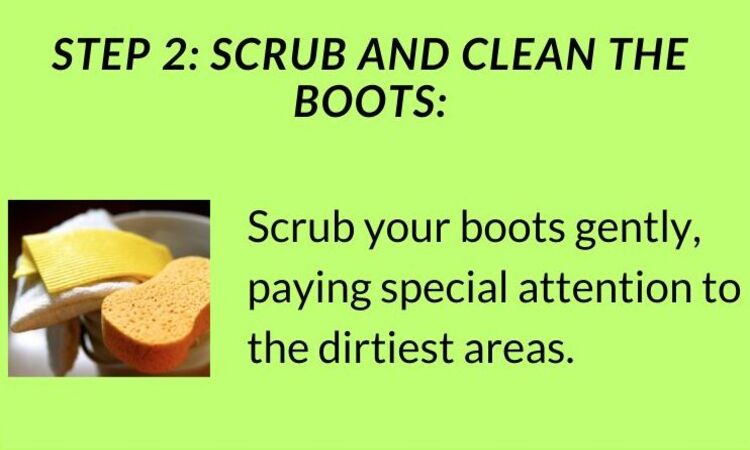
Use a soft-bristled brush or sponge to scrub your boots gently, paying special attention to the dirtiest areas. This will help remove any remaining dirt and grime that has built up on the boots.
Step 3: Rinse the Boots:
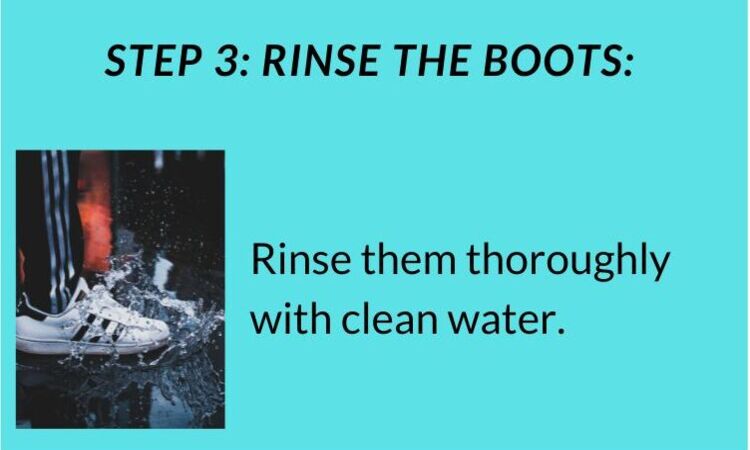
Once you have finished scrubbing your boots, rinse them thoroughly with clean water. Use a hose or sink to rinse off all the cleaning products and dirt from your boots.
Step 4: Dry the Boots:
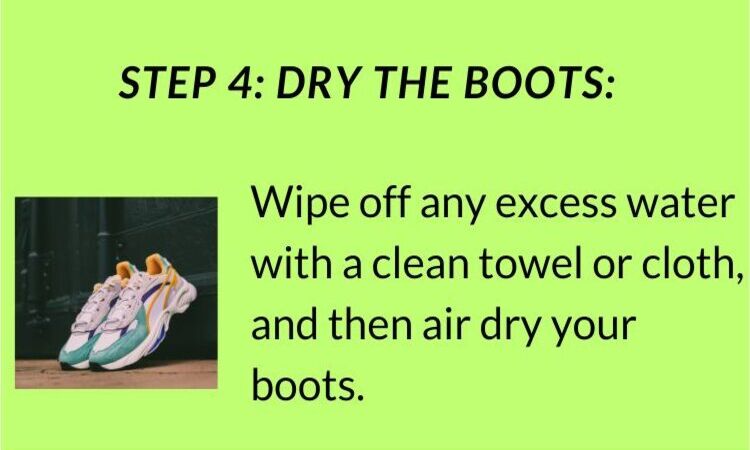
After rinsing, you need to dry your boots thoroughly. Wipe any excess water with a clean towel or cloth, and then air dry your boots away from direct sunlight or heat sources. Do not use a hairdryer or any other heat source to dry your boots, as this can damage the material.
Step 5: Apply Waterproofing Treatment:
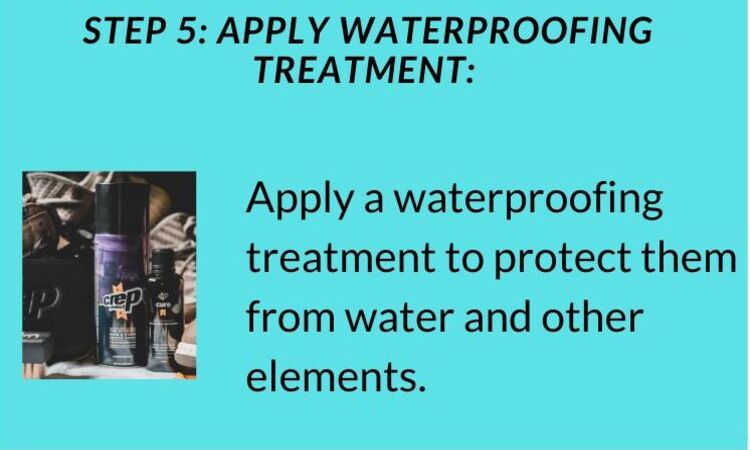
Once your boots are completely dry, apply a waterproofing treatment to protect them from water and other elements. Follow the instructions provided by the manufacturer and ensure that the treatment is evenly applied. Let the boots dry completely before using them again.
Tips for Maintaining Hiking Boots
Properly cleaning your hiking boots is the first step in maintaining longevity and performance.
Read helpful tips to help you keep your hiking boots in top condition:
Regularly clean and condition the boots:
Make sure to clean them after every hike, even if they don’t look dirty. By taking preventative measures, such as regular cleaning and maintenance, you can ensure that dirt and grime don’t accumulate on your hiking boots. This approach will help your boots maintain their appearance and performance over time.
Avoid harsh chemicals:
It is advisable to avoid harsh chemicals such as bleach or ammonia to protect the leather and other materials used in hiking boots, as they can cause damage. Stick to mild soaps or specialized boot cleaners.
Store the shoes properly:
Proper storage is key to ensuring your hiking boots last as long as possible. It’s important to store your boots in a cool, dry place, away from sunlight and heat sources, to prevent damage to the leather and other materials. This will also help prevent dirt and moisture buildup, which can lead to mold and unpleasant odors. By storing your hiking boots correctly, you can help extend their lifespan and keep them in top condition for all outdoor adventures.
Keep your hiking boots organized and in great condition with this durable storage solution.
Regularly inspect the boots:
Be sure to check your boots periodically for signs of wear and tear, such as cracks or tears in the leather, loose seams, or worn-out soles. By catching any signs of damage or wear and tear early on, you can prevent further harm to your hiking boots and increase their lifespan.
So, incorporate these practices into your regular outdoor gear maintenance routine to keep your boots in excellent condition for all your adventures.
How often should you clean hiking boots?
The frequency of cleaning your hiking boots may vary based on their use and the environmental conditions in which they are used. Generally, cleaning your hiking boots after every hike is a good idea.
Even if your boots don’t look dirty, dirt and debris can accumulate in the seams and crevices of the boots, causing damage and reducing their lifespan. By cleaning your boots after every hike, you can prevent this buildup and ensure that your boots are always in top condition.
You may need to clean your boots more frequently if hiking in muddy or wet conditions. In these conditions, mud and moisture can cause more damage to the shoes, so cleaning them thoroughly after each use is essential.
In addition to cleaning your hiking boots, inspecting them regularly for signs of wear and tear is essential. Inspecting your hiking boots regularly allows you to identify potential issues and take action before they become more serious. This proactive approach can save you from having to deal with more significant problems down the line and extend the life of your boots.
By regularly cleaning and inspecting your hiking boots, you can ensure that they are always ready for your next adventure.
FAQs for How to Clean Hiking Boots
Can hiking boots be washed?
Certainly! you can wash hiking boots, but it’s essential to do it correctly to avoid damaging them.
Can I wash my hiking boots in the washing machine?

Putting your hiking boots in the washing machine is generally not recommended as this can damage the material and affect their performance. The machine’s agitation can cause the boots to lose their shape, and the heat from the dryer can cause the material to shrink or crack. Instead, follow the steps outlined above to hand wash your boots.
Why do my boots always stink?
Various factors can cause the odor emanating from your hiking boots. One of the main reasons for the unpleasant smell is sweat. During hikes, your feet sweat, and the moisture gets trapped in the boots, providing a breeding ground for bacteria, causing the stench. Another possible cause of the odor is inadequate ventilation or improper drying after each use. The good news is that various ways exist to eliminate and prevent the smell from recurring.
Q: How can I remove tough stains or scuffs from my hiking boots?
A: For tough stains or scuffs on your hiking boots, gently brush the affected area with a soft-bristled brush. If that doesn’t work, you can use a specialized boot cleaner or a mixture of baking soda and water. Use the cleaner on the affected area and leave it for a few minutes before gently scrubbing with a brush. Rinse the boots thoroughly and let them air dry.
Conclusion
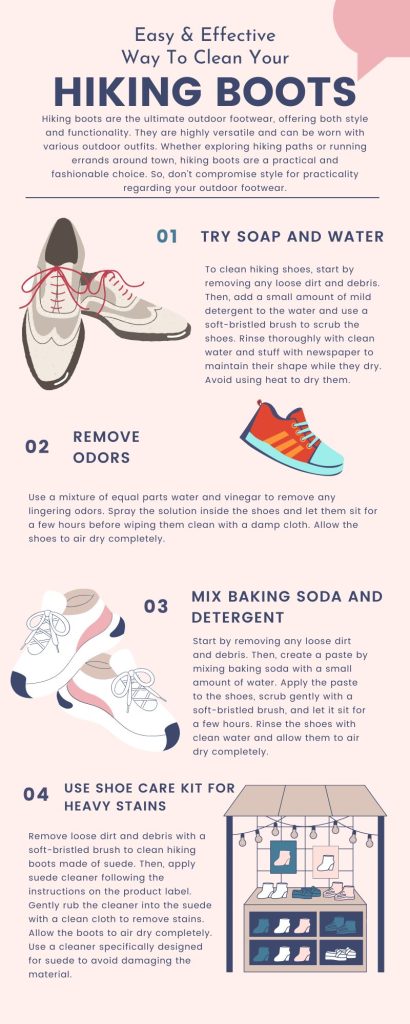
Following the steps outlined in this article and taking the necessary precautions, you can ensure your hiking boots are always ready for your next adventure.
Happy hiking!

